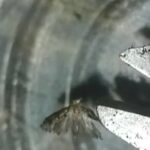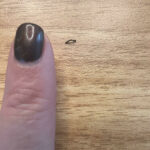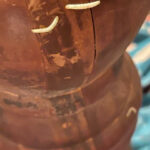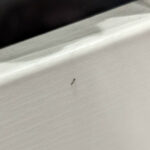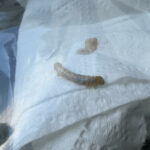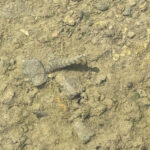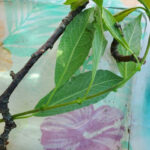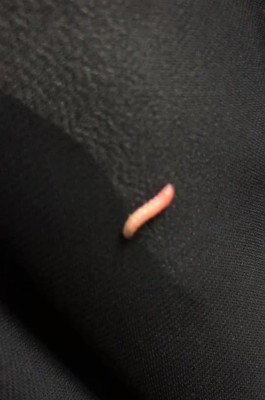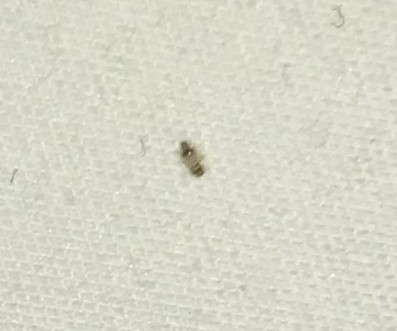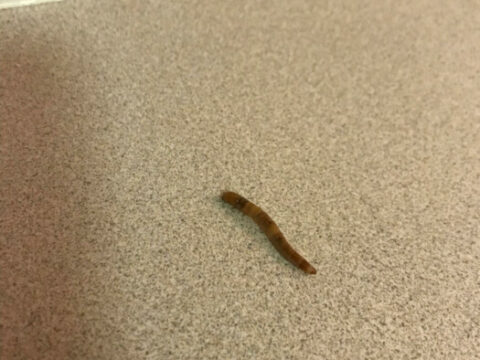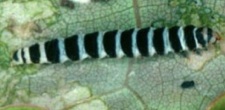
A distressed reader wrote to us a while ago about a worm infestation affecting one of the trees in her garden. The black and white striped worms were attacking her “twisted weeping lavender tree,” which we’ve since gathered is often simply called a “weeping redbud” or a “lavender twist.” The small striped worms are causing the leaves of the redbud tree to turn brown, and since the tree is, from the reader’s perspective, “the apple of my eye in my front flowerbed,” she is highly concerned about its health. The worms, whose black and white stripes run horizontally across their bodies, are all over the trees’ leaves, suggesting that the infestation is fairly severe. What are the worms our reader is finding? They are almost certainly Redbud leaffolders (sometimes “leaffolders” is broken apart into “leaf folders,” or if you want to be scientifically exact, you can call the species Fascista cercerisella). More precisely, they are very likely the larvae of redbud leaffolder moths, which means the reader is dealing with caterpillars, not worms.

We are very confident our reader is finding redbud leaffolders because every piece of information our reader sent us is consistent with this suggestion. First, the small “worms” she has been finding are described exactly like redbud leaffolder larvae, which are small with black and white horizontal stripes across their bodies. The larvae are found on leaves that are folded over – the caterpillars are able to fold leaves by attaching the outer edge of the leaf to the center with silk strands – and this is exactly where the reader found her pests. (She described the leaves as “stuck together,” and when she pulled them apart, she found the larvae.) Moreover, the effect the larvae are having on her tree – turning its leaves brown – is in line with the damage that redbud leaffolder larvae cause. The larvae consume the top layer of a leaf, causing it to dry out and turn brown. Finally, there is the simple fact that our reader has weeping redbud twist, so it is not surprising that it is being attacked by redbud leaffolders.
Naturally enough, the reader wanted to know what she can do about her redbud leaffolder problem. In some cases, it is sufficient to simply prune away the damaged areas. However, if this approach is taken, it is worth mentioning that redbud leaffolder larvae should not be touched – their setae (hair, essentially) can cause a stinging sensation, and while the reaction generally isn’t severe, it’s of course worth avoiding. Various insecticides could also be used, but since as a general rule we do not recommend this response to an infestation, we won’t get into any specifics (plenty of other websites have such information, however).
So, to conclude, we are quite confident that the black and white striped “worms” that our reader is dealing with are redbud leaffolder larvae. When we first read our reader’s question, we were a little daunted. So many different pests afflict so many different plants that it is very difficult to answer specific questions about one type of tree. However, in this particular case we are satisfied that we were able to find that needle in the haystack for our reader.
All About Worms is always free, always reader-supported. Your tips via CashApp, Venmo, or Paypal are appreciated! Receipts will come from ISIPP Publishing.



